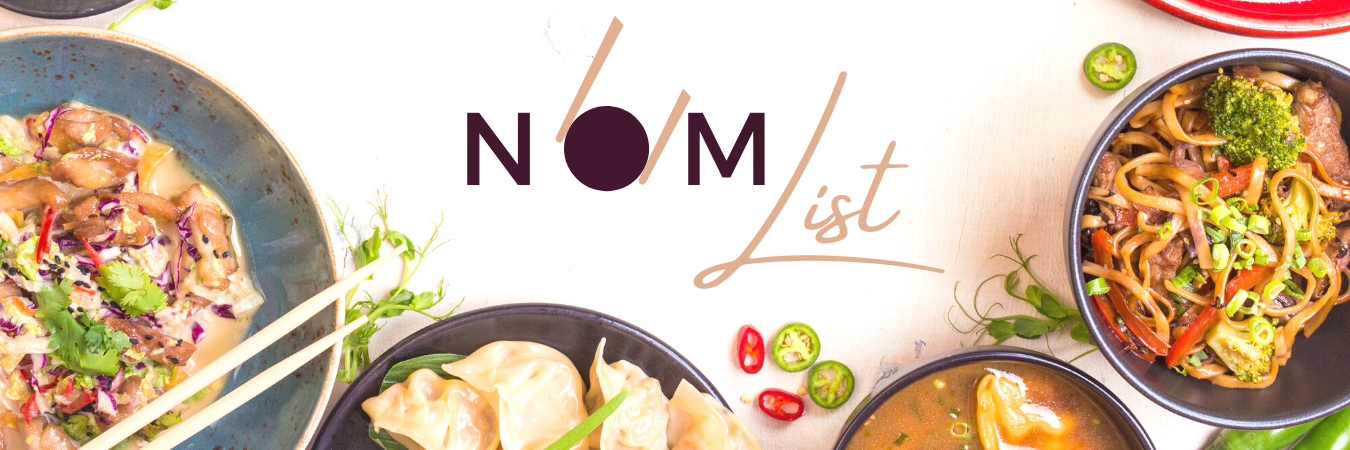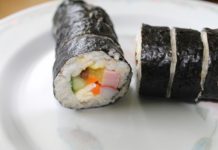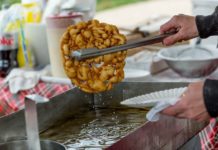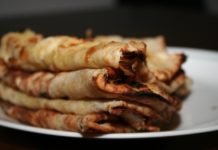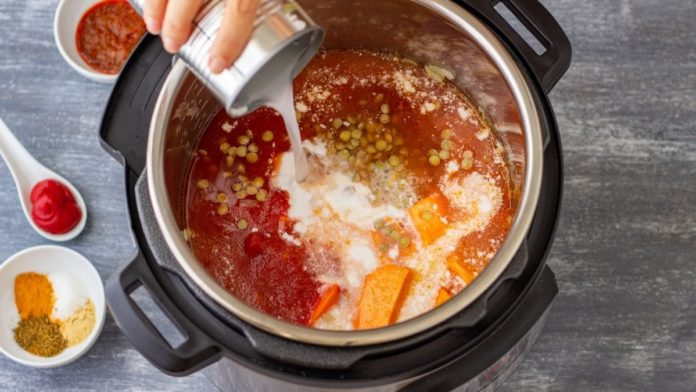
Pressure cookers have become a popular kitchen appliance in recent years due to their ability to significantly reduce cooking time and produce flavorful, nutritious meals. By utilizing an airtight seal and building up steam pressure, pressure cookers cook food faster than traditional methods, making them an excellent choice for busy households or those looking to save time in the kitchen. This article will provide a step-by-step guide on how to effectively use a pressure cooker, ensuring delicious and efficiently prepared meals.
The pressure cooker works by forming an airtight seal, trapping steam inside which in turn increases the temperature of the liquid and ultimately cooks the food at a faster rate. While they come in both electric and stovetop versions, each having their unique features, the basic principles of using a pressure cooker remain the same. To begin the process, one must first add the desired food and liquid to the pot, close the lid securely, and select the appropriate pressure setting depending on the type of cooker being used.
Using a pressure cooker may seem intimidating at first, but with a bit of practice and a solid understanding of the fundamental steps and precautions involved, it can quickly become an invaluable tool in the kitchen. In the following sections, we will delve deeper into each stage of using a pressure cooker, hoping to provide you with the confidence and know-how to make the most of this versatile appliance.
Types of Pressure Cookers
There are two main types of pressure cookers, Electric and Stovetop. Each has its advantages and disadvantages, and the choice between the two depends on individual preferences and needs.
Electric Pressure Cooker
Electric pressure cookers, like the famous Instant Pot or the Cuisinart models, have gained popularity in recent years. They typically come with various programmable functions, such as slow cooking, sautéing, and steaming. These cookers have a built-in control panel that makes it easy to adjust settings according to the recipe or personal preferences.
- User-friendly: Electric pressure cookers are generally easier to use for those who may be less experienced in cooking or do not want to monitor the stovetop constantly.
- Versatile: These cookers offer a variety of cooking functions, making them a multipurpose kitchen appliance.
- Consistent results: Electric pressure cookers maintain consistent pressure and temperature, ensuring evenly cooked meals every time.
However, electric pressure cookers can take up more counter space and might be less durable compared to stovetop models.
Stovetop Pressure Cooker
Stovetop pressure cookers have been around for decades and are known for their durability and high-performance cooking. These cookers are placed directly on the stovetop, and the heat source determines the pressure inside the cooker.
- Faster cooking: Stovetop pressure cookers can reach higher pressure levels, resulting in reduced cooking times compared to electric models.
- Durability: These cookers are built to last, often made from high-quality materials like stainless steel or aluminum.
- Better control: Users have more control over heat and pressure levels, allowing for more precise cooking.
On the downside, stovetop pressure cookers require more attention during cooking and may have a steeper learning curve for beginners.
While deciding between an electric and stovetop pressure cooker, consider factors like durability, multifunctionality, and ease of use to determine which appliance best suits your needs.
Fundamentals of Pressure Cooking
Understanding Pressure
Pressure cooking is a method that utilizes steam and high pressure to quickly cook food. By creating an airtight environment, the pressure cooker raises the boiling point of water, allowing food to cook faster and more efficiently. The key to understanding pressure cooking is recognizing how pressure, steam, and temperature interact.
- A sealed channel called the vent is responsible for maintaining pressure in the cooker.
- When steam builds up inside the cooker, it’s unable to escape, leading to the accumulation of pressure.
- As the pressure increases, the boiling point of water rises, resulting in faster cooking times.
Steam Pressure
The steam produced during pressure cooking plays a critical role in the cooking process. As water heats up, it turns into steam, filling the pressure cooker and exerting pressure on the food being cooked. This pressure helps food cook in less time and is the driving force behind the efficiency of pressure cooking.
Key points about steam pressure:
- Key component of pressure cooking
- Allows for faster cooking times
- Exerts pressure on food, aiding in the cooking process
Temperature
Temperature is another important factor in the pressure cooking process. As the pressure increases in the pressure cooker, so does the boiling point of water. This leads to a higher cooking temperature, which results in food cooking much faster.
To summarize:
- Pressure causes an increase in the boiling point of water
- Higher cooking temperature leads to faster cooking times
- Crucial aspect of the pressure cooking process
Pressure Cooker Features
Pressure cookers are designed with many features to ensure a safe and efficient cooking experience. In this section, we will discuss some of these essential components.
Pressure Indicator
The pressure indicator is a key feature that shows the current pressure level inside the cooker. This can be in the form of a gauge or a color-coded indicator, helping the user to determine when the desired pressure has been reached. Monitoring the pressure is crucial to ensure proper cooking and prevent any accidents.
Release Button
The pressure release valve or button is an integral part of the pressure cooker, allowing steam to be quickly released in a safe and controlled manner. This feature should always be used to release pressure before opening the lid, preventing potential burns from hot steam or spurting food contents.
Vent
The vent is an opening in the pressure cooker’s lid that allows steam to escape. It serves as a safety feature to prevent over-pressure inside the pot. The vent may be covered with a weighted pressure regulator or a valve that automatically adjusts to maintain the desired pressure.
Sealing Ring
The sealing ring is a rubber or silicone gasket that fits securely into the rim of the cooker’s lid, creating an airtight seal as the lid closes. This allows the pressure to build up inside the pot and prevents steam from escaping. Over time, the sealing ring can wear out, so it is essential to check for damage or wear and replace it if necessary.
Safety Valve
The safety valve is a built-in feature designed to release excess pressure if the cooker’s pressure rises beyond the recommended limit. This prevents potentially dangerous situations caused by excessive pressure build-up. Always ensure the safety valve is clean and functioning correctly.
Over-Pressure Plug
An over-pressure plug is an additional safety feature often present in pressure cookers. This plug is designed to pop out or release itself if there is a malfunction in the regular pressure release valve, thereby preventing an unsafe level of pressure build-up.
In summary, pressure cookers contain numerous features for safe and efficient cooking. Ensure these components are in good working order and follow the manufacturer’s instructions for proper use and maintenance.
How to Use a Pressure Cooker
Adding Water and Ingredients
To use a pressure cooker, start by placing the food to be cooked inside the inner pot. For best results, layer ingredients with denser items, such as meats, on the bottom and lighter items, like vegetables or fish, on top. Add the appropriate amount of water to cook the specific food. Usually, around 1 cup of water should suffice for most recipes but refer to the recipe or instruction manual for more precise measurements.
Setting Cooking Time
When determining the cooking time, take into account the type of food being prepared. For example, tougher meats typically require longer cooking times, while fish and vegetables cook more quickly. The table below summarizes common cooking times for specific ingredients:
| Ingredient | Cooking Time |
|---|---|
| Meat | 15-45 minutes |
| Vegetables | 5-10 minutes |
| Fish | 3-8 minutes |
| Rice | 4-12 minutes |
Choosing Pressure Level
Pressure cookers typically offer different pressure levels to accommodate various types of food. Familiarize yourself with your pressure cooker’s settings and select the appropriate level for the meal you’re preparing. High pressure is often suitable for large cuts of meat or dense vegetables, while low pressure is preferable for delicate items like fish or certain types of rice.
Releasing Pressure
After the cooking is complete, it is crucial to release the pressure from the cooker before opening the lid. There are two common methods for releasing pressure:
- Quick release: This method involves manually turning a valve or pressing a button on the appliance to release the steam rapidly. Use this method when cooking delicate foods like vegetables or fish to avoid overcooking.
- Natural release: Allow the pressure cooker to sit and cool for an extended period, typically 10-20 minutes, and allow the pressure to dissipate gradually. This method is preferred for meats and other dishes with a longer learning curve that requires a slow, steady release.
Remember to exercise caution when releasing pressure, as the steam can be scalding hot. Always refer to your pressure cooker’s instruction manual for specific guidance on how to safely release pressure.
Mastering the use of a pressure cooker might require some trial and error, but with practice and understanding of your appliance’s features, you’ll soon be able to harness its full potential and enjoy its time-saving and convenient cooking benefits.
Cooking Different Foods
Meat and Poultry
When cooking meat and poultry in a pressure cooker, it’s essential to consider the size and cuts of the meat as it influences the cooking time. For example, thin chicken slices and small beef cubes cook faster. Firstly, brown the meat in the pressure cooker without the lid to achieve a flavorful result. Then, add enough liquid (such as broth or water) to cover the meat partially, usually about 1-2 cups. Cook for the recommended time based on the type of meat and its thickness.
Beans and Grains
Pressure cookers work wonderfully with beans and grains, as they reduce the cooking time significantly. Before cooking, soak beans for at least 4-6 hours to soften them. Grains like rice and quinoa do not require soaking. Use a ratio of 1:1.5 – 1:2 for grains to water. To prevent sticking, add a tablespoon of oil to the cooker. Cooking times vary for different beans and grains, so follow specific guidelines for each type.
Vegetables
For vegetables in a pressure cooker, use around 1/2 cup of water for a 5-minute cook time and 1 cup for 5-10 minutes. Delicate vegetables like spinach and zucchini require minimal time, while harder vegetables like potatoes and carrots need more time.
| Vegetable | Cook Time (minutes) |
|---|---|
| Spinach | 1-2 |
| Zucchini | 2-3 |
| Carrots | 4-5 |
| Potatoes | 6-8 |
Rice and Pasta
Pressure cookers can cook rice and pasta quickly and evenly. Cooking time can vary based on the type of pasta or rice. Follow these general guidelines for cooking:
- White rice: 1:1 ratio with water, cook for 5-7 minutes
- Brown rice: 1:1.25 ratio with water, cook for 18-20 minutes
- Pasta: Slightly less water than on the package, cook for half the time as suggested by the package instructions
Fish and Seafood
Fish and seafood cook quickly in a pressure cooker, and the moisture retained helps to keep the food tender. Use a steamer basket to keep the seafood from touching the water, and add 1-2 cups of water or another cooking liquid like wine or broth. Cooking times vary by the type of seafood, but generally, fish should be pressure cooked for 3-5 minutes and shellfish for 6-8 minutes.
Fruits
Fruits can be pressure cooked to make quick jams, compotes, and dessert sauces. Use about 1 cup of liquid for every 4 cups of peeled and diced fruit. Cook the fruit for 3-5 minutes depending on its firmness, then add sweeteners or seasoning after releasing the pressure.
Cooking Accessories
Steamer Basket
A steamer basket is a convenient accessory to use with a pressure cooker. It helps to elevate food above the liquid in the pot, ensuring even heat distribution and preventing overcooking. Steamer baskets come in various sizes and materials, including stainless steel and silicone. They are ideal for cooking delicate foods such as fish, vegetables, and fruits. To use a steamer basket:
- Prepare the food by cleaning and cutting it as necessary.
- Place the steamer basket inside the pressure cooker.
- Add the appropriate amount of liquid to the pressure cooker. Typically, fresh fruits and vegetables require about 1/2 cup (125 ml) of water, while dried fruits may need 1 cup (250 ml).
- Arrange the food in the steamer basket, making sure not to overcrowd it.
- Close the pressure cooker lid, ensuring the valve is in the correct position.
- Follow your recipe or pressure cooker instructions for selecting the appropriate cooking time and pressure setting.
Trivet
A trivet is another useful accessory for pressure cooking. It functions similarly to a steamer basket, providing elevation for food items that need to be kept away from direct contact with the liquid in the pot. Trivets are typically made of metal or silicone and are available in various shapes and heights. Trivets can be used for multiple purposes, such as keeping jars off the bottom of the pressure cooker while canning or cooking larger cuts of meat without them sitting in the liquid. To use a trivet:
- Place the trivet inside the pressure cooker.
- Add the required amount of liquid to the pressure cooker, depending on the type of food and cooking time.
- Position the food or container on top of the trivet, ensuring it remains stable.
- Close the pressure cooker lid, making sure the valve is in the correct position.
- Follow your recipe or pressure cooker instructions for selecting the appropriate cooking time and pressure setting.
Recipes and Dishes
Meals
Pressure cookers are versatile appliances that can be utilized to create a wide range of delightful meals. Here are some examples:
- Cochinita Pibil: A Mexican dish consisting of pulled pork cooked in annatto sauce. This dish can be prepared in a pressure cooker in much less time compared to traditional methods.
- Pressure Cooker Savory Mustard Pork Roast: Combining honey, molasses, diced tomatoes, red wine, and stone-ground mustard, this dish offers a unique flavor profile for a pork roast.
- Pressure Cooker Carnitas: Create tender, flavorful carnitas in your pressure cooker – perfect for tacos or burritos.
Soups and Stews
The pressure cooker is well-suited for creating hearty and comforting soups or stews. A few examples include:
- Pressure Cooker Chili: A thick and robust chili that combines three different meats for a delectable winter meal.
- Best Instant Pot Chicken Tortilla Soup: Chicken tortilla soup can be easily prepared in a pressure cooker, resulting in a rich and flavorful broth.
- Kelly’s Pressure Cooker Beef Stew: A traditional beef stew can be cooked in a fraction of the time using a pressure cooker while still maintaining a slow-cooked taste.
Desserts
Surprisingly, pressure cookers can also be used to make delicious desserts, such as:
- Instant Pot Pineapple-Coconut-Lime Rice: A unique rice dessert that combines tropical flavors, cooked to perfection in a pressure cooker.
- Pressure-Cooker Apple-Cranberry Grains: This sweet and tart dessert combines apples and cranberries with whole grains for a satisfying treat.
- Pressure Cooker Cheesecakes: Cheesecakes can be cooked using the steam function of a pressure cooker, resulting in a smooth and creamy texture.
The temperature and steam capabilities of pressure cookers make them ideal for creating a wide variety of recipes, ranging from hearty meals and comforting soups to indulgent desserts.
Safety Precautions
Before Cooking
It is essential to familiarize yourself with the pressure cooker and its safety features before using it. Make sure to read the owner’s manual thoroughly and follow all precautions. Inspect the equipment to ensure all parts are present, undamaged, and correctly installed. Check the sealing ring, safety valve, and over-pressure plug as they play a crucial role in maintaining a safe cooking environment.
- Read and understand the owner’s manual
- Inspect equipment for damage or missing parts
- Ensure proper functionality of sealing ring, safety valve, and over-pressure plug
During Cooking
While cooking with a pressure cooker, adhere to these safety measures to ensure a smooth and accident-free experience.
- Don’t Overfill: Keep food and liquid levels below the MAX line to avoid blocking the safety systems in the lid. The maximum capacity is 1/2 full for beans, rice, and grains, and 2/3 full for everything else.
- Use Adequate Water: Ensure you add enough water based on the specific food you are cooking.
- Monitor Heat Setting: Place the cooker on a larger burner and set the heat to high, adjusting as necessary based on the recipe’s cooking time and pressure requirements.
| Do’s | Don’ts |
|---|---|
| Keep below MAX | Overfill the cooker |
| Add enough water | Use too little or too much water |
| Adjust heat accordingly | Keep the heat constantly high |
After Cooking
Once your meal is ready, be cautious when releasing pressure and removing the lid. There are three ways to release pressure:
- Natural Release: Remove the cooker from heat and let it sit until the pressure goes down.
- Cold Water Release: Run cold water over the lid of the closed pan.
- Quick Release: Use the pot’s steam release valve to expel steam.
Never attempt to open the cooker before the pressure has fully released, as it can cause serious accidents. Practice patience and allow the pressure to decrease before checking on your food.
- Use appropriate pressure release methods
- Wait for the pressure to release before opening the lid
Cleaning and Maintenance
Cleaning the Inner Pot
To properly clean the inner pot of your pressure cooker, follow these steps:
- Unplug the pressure cooker and allow it to cool down.
- Remove the inner pot from the cooker base.
- Fill it with warm water and a mild dish detergent, and let it soak for up to two hours.
- Use a soft brush or sponge to gently scrub the pot, removing any stuck-on food particles.
- Rinse the inner pot thoroughly with warm water and dry it with a clean cloth or let it air dry.
Care for Sealing Ring
Taking care of the sealing ring is crucial for maintaining the functionality of your pressure cooker:
- Remove the silicone ring gently from the lid.
- Use a damp cloth sprayed with a cleaning solution to wipe the ring clean.
- Check the instruction manual for any specific recommendations on cleaning the sealing ring.
- Ensure the ring is thoroughly dry before reattaching it to the lid.
Cleaning the Lid and Vent
Proper cleaning of the lid and vent is essential for pressure cooker safety and performance:
- Wipe the inside and outside of the pressure cooker lid with a damp cloth or sponge, using warm water and mild dish detergent.
- Pay special attention to the steam release valve and float valve, ensuring they are free of debris and move with ease.
- If needed, use a small brush to clean any hard-to-reach areas on the lid or vent.
- Allow the lid and vent components to air dry completely or dry them with a microfiber cloth.
By following these maintenance steps regularly, you can ensure that your pressure cooker remains clean, safe, and efficient for years to come.
